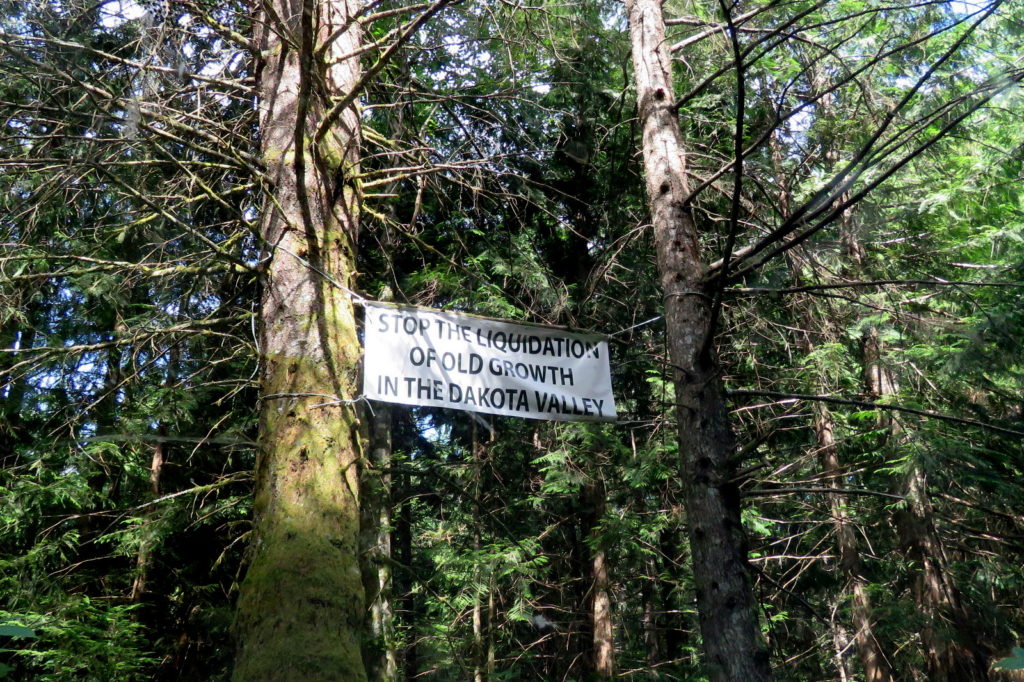
‘Afraid of the water’? Life in a city that dumps billions of litres of raw sewage into lakes and rivers
10 billion litres of sewage are dumped into Winnipeg’s lakes and rivers each year. Some...
It has been more than three months since the B.C. government received a report and recommendations from the independent old-growth review panel tasked by the province to hear from British Columbians — and it could be any day now that they will share the findings along with plans for how to address this old-growth crisis.
We have known for years that B.C.’s old-growth forests are under threat. In June, an expert report revealed that less than three percent of the province’s original forest with very big, old trees remains standing.
The report also showed that most of the last 415,000 hectares of old-growth forests with big and huge trees are not protected from logging. These are the forests with massive, majestic trees which author John Vaillant eloquently describes as being “huge, holy, and eternal-feeling, like a branched and needled Notre Dame.”
The evidence is clear: after being stewarded for thousands of years by Indigenous peoples, a century of industrial logging has cut all but a very few of the last massive, old trees. According to the report’s authors, provincial management for old-growth is characterized by “loopholes, gaming, arithmetic errors and simple lack of monitoring.” They warn that some old-growth ecosystems will be logged to the brink in the next five years if we don’t act now.
While we wait for the provincial response to the review panel’s report, more than 500 soccer fields of B.C. old-growth forest are clearcut every day. Soon they will have all been cut down and it will be too late to protect these ancient giants. Even stands with trees older than 1,000 years are not safe.

Groups have been calling on the B.C. government to cancel cutblocks in the Dakota Valley on the Sunshine Coast. Photo: Jens Wieting
We need John Horgan’s NDP government to work with Indigenous governments for immediate protection measures and strengthened forestry laws to protect these endangered forests.
B.C.’s last old-growth forests hold cultural values, critical habitat for endangered species and carbon that has been captured over hundreds of years — most of which is released a few short years after a clearcut. These forests provide clean drinking water and salmon habitat, benefit our health and are critical for the province’s billion-dollar tourism industry.
Old-growth forests are also vital in protecting communities from the effects of climate change. As we face water shortages, flooding, extreme rainfall and other worsening climate impacts, intact old-growth are more resilient than logged landscapes and can better safeguard the health and safety of our communities.
The current B.C. government was elected with a promise to take action on old-growth forests, based on evidence and science. For three years, the province has asked concerned citizens, communities and stakeholders for input and received feedback from tens of thousands on endangered species legislation, amending forestry laws and old-growth protection. Nine in 10 British Columbians support taking action to defend old-growth and want the government to keep its promise, a recent poll commissioned by Sierra Club BC shows.
Despite this massive public support, it has been three years of ‘talk and log,’ as clearcut logging of the last old-growth forests has continued in the midst of a climate and extinction crisis.
With time running out, concerned citizens fear their voices are not being heard. Some are taking stark actions, like Robert Fuller and James Darling’s two-week hunger strike in Nanaimo or activists blockading road building near Port Renfrew to save Fairy Creek, the last intact watershed on southern Vancouver Island, in Pacheedaht territory. They know that if today’s governments don’t take a stand for these irreplaceable, endangered ancient forests, it will be too late.
Working together, provincial and Indigenous governments can protect old-growth forests through immediate logging moratoria in endangered ecosystems, followed by a series of long-term solutions. This could include the creation of new Indigenous protected areas, amendments to close loopholes in provincial forestry laws and agreeing on what funding and support is needed to realize a vision for intact forests, thriving communities and respect for the rights of Indigenous peoples.
Increased protection for old-growth can be enabled through COVID-19 economic recovery initiatives supporting Indigenous-led solutions, value-added wood product manufacturing, restored government stewardship, ecoforestry and restoration. Investing in forest conservation and improved forestry is an opportunity to create jobs that reduce carbon pollution and strengthen B.C.’s climate action plan, CleanBC, through targets and strategies for reducing forest emissions.
As we have learned from COVID-19, ignoring evidence and delaying action can quickly make matters worse. Right now, the B.C. government has the opportunity to show the same leadership we have seen from the province in response to the pandemic by safeguarding these natural life support systems. For the sake of our collective health and well-being, it’s time to protect the last remaining old-growth forests in B.C.
Get the inside scoop on The Narwhal’s environment and climate reporting by signing up for our free newsletter. On a warm September evening nearly 15...
Continue reading
10 billion litres of sewage are dumped into Winnipeg’s lakes and rivers each year. Some...

Court sides with Xatśūll First Nation, temporarily halting Mount Polley mine waste expansion

Break out the champagne: Emma’s storied life and leadership in journalism has earned her the...
